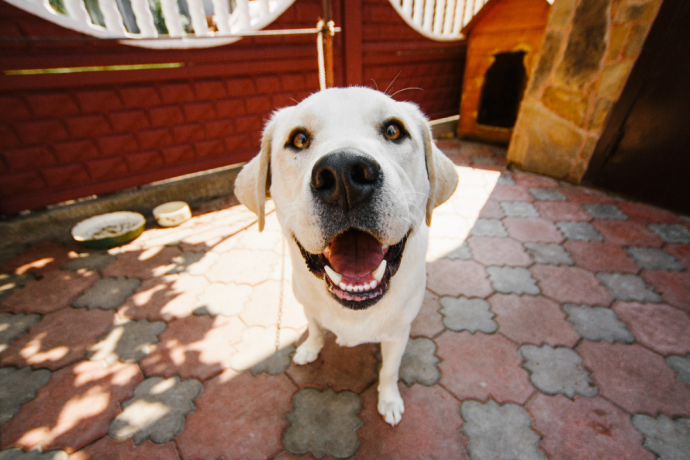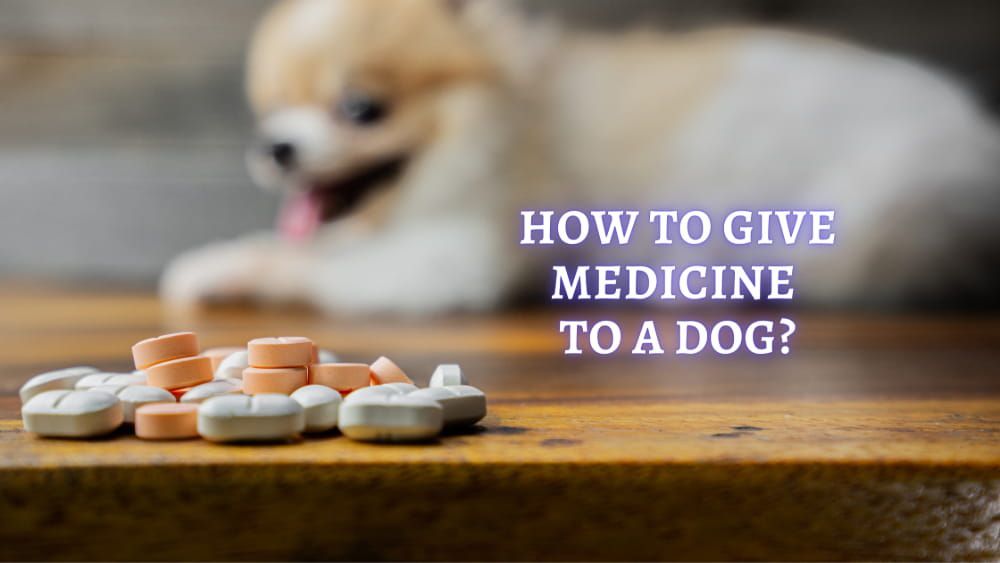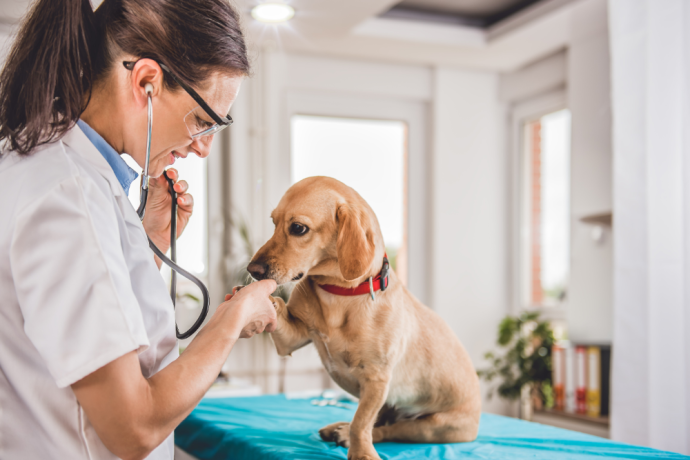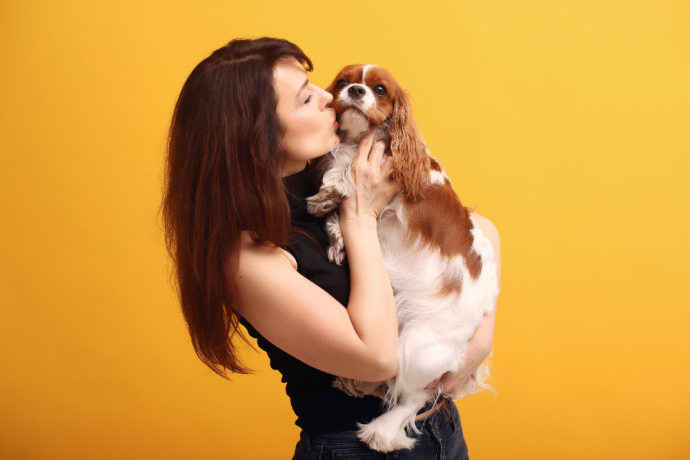How to Give a Dog a Pill: Tips from a Vet
Written by:
Author: Dr. Kathryn Dench
Dr. Kathryn Dench is an experience veterinary with over 10 years' experience in small animal and exotic pet medicine. Kate qualified from Cambridge University Veterinary School in 2007. Kate has worked in a number of veterinary practices in the UK. She has extensive experience in the medical care of pet species, from dogs and cats to chickens and chameleons! In free time, Kate writes pet advice in order to ensure that owners are receiving the best possible information on how to care for their pets.
View all 9 articlesLearn about our editorial process and veterinary review board.
Viewed: 288
Updated on: 01/06/2023
We’ve all been there. The unexpected trip to the vet with a sick or injured pet. The relief of knowing they have got the treatment they need. And the dread when we are handed a bag of medications to administer at home.
Getting mediGetting medicines into our dogs can be a stressful experience. Some drugs come prepared in palatable treat form, which can encourage dogs to eat them, but with some medications – and some dogs – it can be a real fight. It is estimated that “non-compliance”, meaning not giving all the medicines that have been prescribed for our pets, is the leading cause of antibiotic resistance in animals [1] and a significant cause of treatment failure – after all, “medicines will not work if you do not take them!” [2]
So whether your pooch needs a short course of drugs or long-term medication, a strategy is required to ensure they take every dose. It is important to discuss your medications with your veterinary team: they will be able to tell you important details about your dog’s drugs, such as whether they can be given with food and whether they have to be given at a particular time of day. This article explores some tips and tricks from professionals to help you make your dog’s medication routine less stressful and more successful!
Put the Medicine in the Dog’s Food
For some dogs, hiding medicine in food is the easiest way of getting them to take it. This works particularly well for animals who get so excited about food that they swallow it without thinking twice! But some dogs are cunning at spotting pills in their food and will eat round the tablet, leaving it sparkly clean in the middle of their dish when they have finished. Others are even more devious and will remove the pill from the plate and hide it somewhere else in the house!
For the best chance of success, hide the tablet in something that your dog will eat quickly, with a solid flavor to disguise the taste of the medicine. Ham, peanut butter, and cream cheese are all used to hide drugs. Offer the hidden pill as one of a series of treats given one after another so that your dog doesn’t get wise to your tricks. If the medicine can be provided with food, follow these treats with your dog’s meal. Giving the medications directly to your pet in this way also ensures the right animal gets the drug, which is always a concern in multi-pet households!
If the process of hiding the tablet in food is too messy, some commercial treats are designed with a little pocket for hiding pills. While not the most economical option, if your dog will definitely get the medication they need, it might be worth it!
READ MORE: What Shots does a Puppy need?
How to Give a Pill to your Dog?
There are times when putting medications in food isn’t going to work. If your dog doesn’t have an appetite, if the medicines have to be given on an empty stomach, or if you aren’t certain they are getting every dose, then administering medicines directly to your dog is the best way to ensure your dog receives all the medication they have been prescribed.
A word of warning: your approach depends very much on your dog’s temperament. If you know, they are not amenable to you handling their mouth, or if, at any point in the process, their body language warns you that you might get bitten, you should move away and choose a different method. The technique described here is based on personal experience: different things work for others. You can always check with your veterinarian if you need a different suggestion for your particular pet.
Step 1: Hold still
Holding the animal correctly and safely is the biggest trick to making the process go smoothly. The first step is to recruit an assistant to help restrain your dog.
It’s most helpful if they can get your dog to sit and position themselves behind the dog, reaching forwards to hold onto the two front legs. This stops your dog from backing away or reaching up at you with its front legs. Working on a surface or table is helpful for smaller breeds, so your assistant can stand behind them, holding their front legs and supporting the body with their arms on either side.
In this position, you can apply creams and drops to the eyes and ears or access your pet’s mouth to administer oral medications. On to step two…
Step 2: Pop the pill
If tablets are what the doctor ordered, then with your dog safely restrained by your assistant, it’s time to put the pill in the mouth – and, with any luck, keep it there!
So here’s how. Use one hand to hold the top of muzzle, with your palm on the top of the nose and your thumb and forefinger holding the upper jaw just behind the canine teeth. [3] In this position, your fingers are outside the upper lips, and protected from being bitten. With the tablet in your other hand, use your fingers to pull the lower jaw down, place the pill at the back of the tongue in the center of the throat, and then close the mouth. Point your dog’s nose slightly upwards, towards the top corner of the room, and gently stroke their neck until you hear them swallow or see them lick their lips. Follow up with lots of praise and some treats!
READ MORE: Healthy Dog Gums
Easier said than done? It can certainly take practice to get used to the technique, but the process does get easier. The biggest pitfalls are putting the pill at the side of the mouth rather than at the back, or not waiting for the swallow. For some crafty animals, this lets them keep the tablet in their mouths until they have a chance to spit it out. As you gain confidence with your technique, the less fuss your dog will make. Gradually they will associate the process with attention and treats rather than something to be worried about.
If you’re not certain about putting your hand into your dog’s mouth, special instruments called pill guns or pill shooters can help. Pill shooters are available from most pet stores and veterinary centers. You load the tablet into the end of the shooter, and can then direct it to the right spot at the back of the mouth before releasing the tablet. It can be harder to aim than using your hands, but better than risking getting a nip from a nervous pup!
READ MORE: Best Puppy Food
Giving Dog Liquid Medications
Giving medicines in paste or liquid form to your pet is in some ways easier than tablets, but can have its own challenges too. Depending on the medication, some dogs will eat it on their regular food, but if your canine friend is a picky eater it can be difficult to be sure they have taken all the medicine.
The alternative is to administer the medication directly into your dog’s mouth, in a similar way to the tableting procedure described above. Making use of the gap behind your dog’s canine teeth at the side of their mouth, insert the nozzle of the dosing syringe and direct it towards the back of the mouth. While it can be tempting to squirt in a full dose as quickly as possible, sometimes this can make the animal inhale the medicine instead of swallowing it. Aim to drizzle the medication onto the tongue at a steady speed for best results.
READ MORE: Best CBD Oils for Dogs
Conclusion
There are a range of different methods for getting medications into our dogs, and sometimes it’s a case of trial and error to see which particular technique works best for you and your pet. If you’re not sure you’re doing it right, you can always book an appointment with your vet nurse at your local clinic who can help critique your style and offer handy tips. With a confident medicating strategy, you can be sure every dose of medication is getting into your dog, and their recovery will be as speedy as possible.
Article Sources:
- “Better Compliance: Better Outcomes.” Veterinary Practice, 7 Dec. 2020, veterinary-practice.com/article/better-compliance-better-outcomes.
- “Non – Adherence in Veterinary Medicine.” VetFuturist, vetfuturist.com/non-adherence-veterinary-medicine.
- “Giving Oral Medications to a Dog.” VetMed, vetmed.wsu.edu/outreach/Pet-Health-Topics/categories/procedures/dogs/giving-oral-medications-to-your-dog.
 Dog Veterinary Tips My Dog’s nose is Dry and Cracked: Causes and Things to Help
Dog Veterinary Tips My Dog’s nose is Dry and Cracked: Causes and Things to Help - 327
- 0
 Dog Veterinary Tips Pneumonia in Dogs: Symptoms, Diagnosis, Treatment and Recovery (Vet Advice)
Dog Veterinary Tips Pneumonia in Dogs: Symptoms, Diagnosis, Treatment and Recovery (Vet Advice) - 478
- 0
 Dog Veterinary Tips Dog Losing Hair Around the Eyes: Causes, Diagnosis and Treatment (Vet Advice)
Dog Veterinary Tips Dog Losing Hair Around the Eyes: Causes, Diagnosis and Treatment (Vet Advice) - 5706
- 0
 Dog Veterinary Tips Why is my Dog throwing up: Causes and Preventing (Veterinary Advice)
Dog Veterinary Tips Why is my Dog throwing up: Causes and Preventing (Veterinary Advice) - 23424
- 5
 Dog Care Why Is My Dog Bleeding From Its Butt? Causes and treatment of rectal bleeding in the dog
Dog Care Why Is My Dog Bleeding From Its Butt? Causes and treatment of rectal bleeding in the dog - 22074
- 0
 Dog Care My Dog Keeps Scratching His Mouth: Reasons Why Your Dog Scratching Face
Dog Care My Dog Keeps Scratching His Mouth: Reasons Why Your Dog Scratching Face - 17560
- 1





















